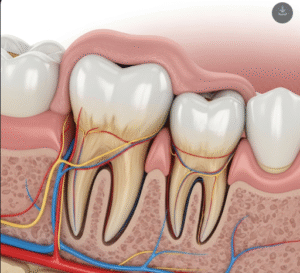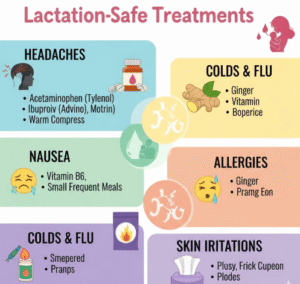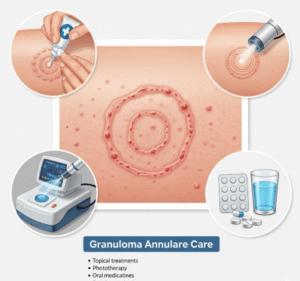Overview
Ptosis surgery, also known as blepharoptosis repair, is a surgical procedure designed to correct drooping of the upper eyelid in adults. Drooping eyelids can interfere with vision, cause eye strain, and affect facial appearance, making this surgery both functional and cosmetic.
South Korea is renowned for expert oculoplastic surgeons, advanced surgical techniques, and precise cosmetic outcomes, ensuring adult ptosis surgery is safe, effective, and aesthetically satisfying.
What is Ptosis Surgery?
Ptosis surgery involves tightening or shortening the muscles that lift the eyelid (levator muscle or frontalis sling) to restore proper eyelid position. Key points include:
✔ Restores normal eyelid function and field of vision.
➔ Improves facial symmetry and appearance.
● Minimally invasive options are available for mild to moderate ptosis.
★ Customizable techniques depending on severity, eyelid muscle strength, and patient goals.
This surgery is ideal for adults with drooping eyelids that affect vision, daily activities, or self-confidence.
What are the Benefits?
Ptosis surgery offers multiple advantages:
✔ Restores upper visual field and improves vision.
➔ Reduces eye strain, fatigue, and headaches caused by compensatory brow lifting.
● Enhances facial appearance and symmetry.
★ Minimally invasive techniques allow faster recovery.
➤ Long-lasting results, with eyelid position maintained for many years.
Procedure Details
1) How should I prepare for Ptosis Surgery?
Preparation ensures safety and optimal results:
✔ Medical evaluation: Eye examination, eyelid measurements, and assessment of levator muscle function.
➔ Medication review: Stop blood thinners or anticoagulants as instructed.
● Health optimization: Manage chronic conditions like diabetes or hypertension.
★ Patient counseling: Discuss procedure steps, expected outcomes, potential risks, and recovery plan.
➤ Photography: Preoperative photos help plan surgical approach and evaluate post-op results.
2) What happens during the procedure Ptosis Surgery?
Ptosis surgery is usually performed under local anesthesia with sedation or general anesthesia:
✔ Incision: Made along the natural eyelid crease for minimal visible scarring.
➔ Muscle adjustment: Levator muscle is tightened or shortened to elevate the eyelid.
● Alternative techniques: Frontalis sling may be used for severe ptosis or poor muscle function.
★ Closure: Incision closed with fine sutures; hidden within eyelid crease.
➤ Procedure duration: Typically 30–90 minutes depending on technique and bilateral involvement.
Korean surgeons emphasize precision, symmetry, and minimally invasive techniques for natural eyelid contour and function.
3) What happens after Ptosis Surgery?
Post-operative care focuses on healing, reducing swelling, and monitoring eyelid function:
✔ Pain management: Mild discomfort treated with analgesics.
➔ Cold compresses: Reduce swelling and bruising in the first 48 hours.
● Activity restrictions: Avoid heavy lifting, bending, and rubbing the eyes for several weeks.
★ Follow-up: Regular visits to monitor eyelid position, symmetry, and suture healing.
➤ Scar care: Small incisions usually heal well and become almost invisible over time.
Risks / Benefits
Possible Risks:
✔ Infection or bleeding at incision site
➔ Temporary or permanent asymmetry
● Undercorrection or overcorrection of eyelid position
★ Dry eye or incomplete eyelid closure (usually temporary)
➤ Rare injury to surrounding ocular structures
Major Benefits:
✔ Restores proper eyelid position and improves vision
➔ Enhances facial symmetry and cosmetic appearance
● Minimally invasive with short recovery time
★ Durable results when performed by skilled oculoplastic surgeons
➤ Reduces eye strain, headaches, and compensatory brow lifting
Recovery and Outlook
✔ Immediate recovery: Most patients resume light activities within 1–2 days.
➔ Swelling and bruising: Peaks in the first 48–72 hours and subsides over 1–2 weeks.
● Suture removal: Usually 5–7 days after surgery if non-absorbable sutures are used.
★ Return to normal activity: Resume work after 1 week; strenuous activity after 3–4 weeks.
➤ Long-term outcome: Eyelid position and function generally stable for years; revision is rare if performed properly.
When To Call the Doctor
Contact your doctor immediately if you notice:
✔ Severe or increasing pain
➔ Signs of infection (redness, pus, fever)
● Significant asymmetry or eyelid drooping after initial healing
★ Difficulty closing the eye or persistent dry eye symptoms
➤ Vision changes such as double vision or sudden decrease in vision
Best Korea Option / Process
South Korea provides expert adult ptosis surgery care with:
✔ Leading hospitals: Seoul National University Hospital, Samsung Medical Center, Asan Medical Center Oculoplastic Surgery.
➔ Advanced surgical techniques: Minimally invasive, precise levator or sling procedures.
● Experienced oculoplastic surgeons: Skilled in functional and aesthetic eyelid correction.
★ Comprehensive care: Pre-op assessment, surgery, post-op monitoring, and scar management.
➤ Medical tourism support: Translation, appointment coordination, and follow-up care for international patients.
✅ Highlights:
✔ Ptosis surgery restores eyelid function and visual field in adults
➔ Minimally invasive, precise, and cosmetically effective
● Reduces eye strain and improves facial symmetry
★ Risks include infection, asymmetry, or temporary dry eye
➤ Korean hospitals provide expert surgeons, advanced techniques, and comprehensive post-op care













